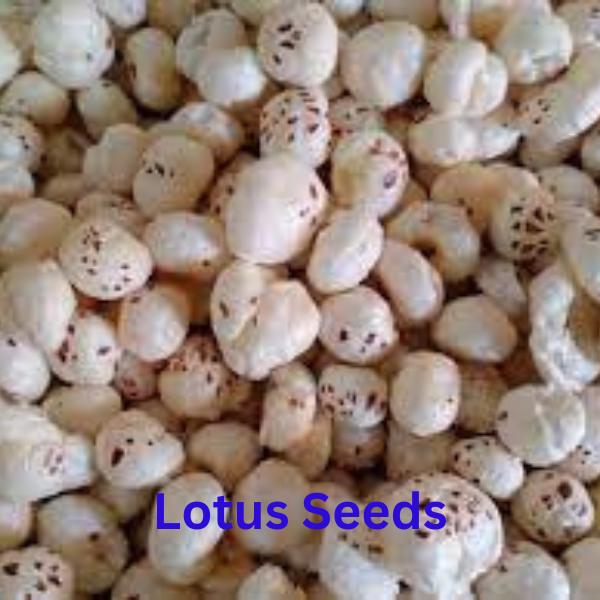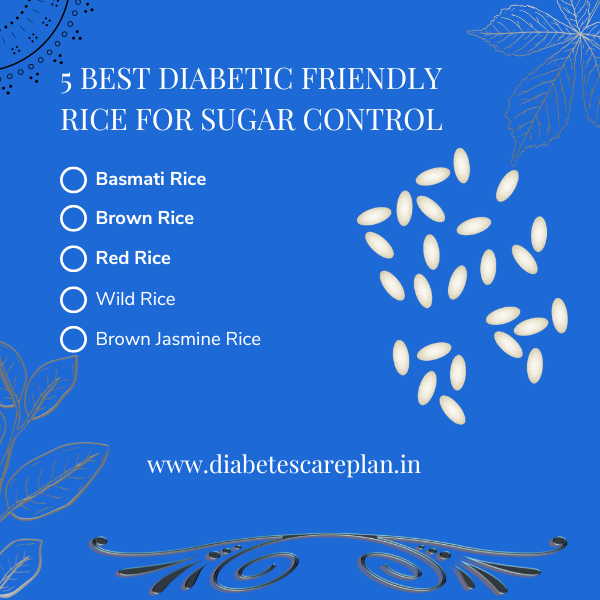In this blog post, we are going to discuss 7 best foods to manage blood sugar levels as under:
Table of Contents
Here , we will explore the 7 best foods to manage blood sugar level for diabetes. Controlling blood sugar levels is essential for those with diabetes as well as everyone trying to stay healthy in general. The main energy source in our body, glucose, is regulated in large part by the foods we eat.
We’ll look at the top ten foods in this post that will help you naturally control your blood sugar levels in addition to being delicious. These foods can significantly alter your daily routine, whether your goal is to manage diabetes or simply maintain a balanced diet
1. Beans: A Nutritional Powerhouse for Managing Diabetes
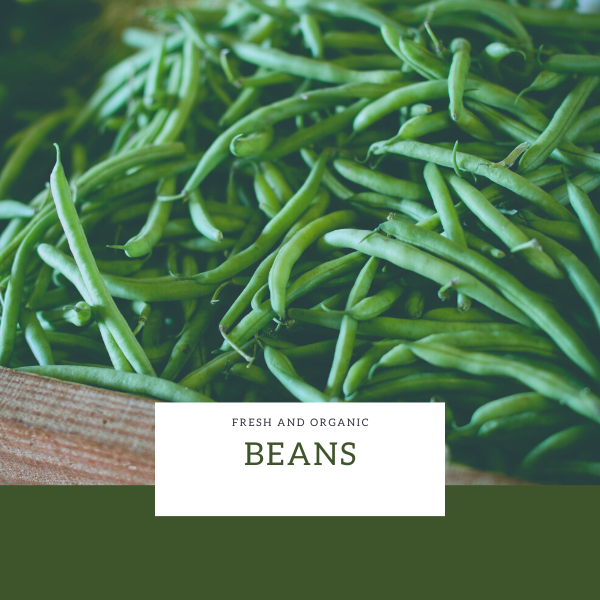
Beans are an excellent food choice for managing diabetes due to their high fiber content, low glycemic index, and nutrient-rich vegetables. Here’s how they benefit people with diabetes:
1.1 High in Dietary Fiber:
Dietary fiber, especially soluble fiber, which is abundant in beans, serves to slow down the digestion and absorption of carbs. By delivering a constant flow of glucose into the bloodstream, this mechanism helps to minimize abrupt rises in blood sugar levels. A cup of cooked beans yields approximately 15 grams of fiber on an average, which is almost half of the daily quantity for adults.
This is one of the Best Foods To Manage Blood Sugar Levels for people diabetes.
1.2. Low Glycemic Index:
The rate at which a food elevates blood sugar levels is gauged by its glycemic index (GI). Due to their low GI, beans cause blood glucose to rise more gradually and more slowly than other foods. For instance, black beans are a great choice for blood sugar control because of their low GI of about thirty.
1.3. Rich in Protein:
Additionally, beans are an excellent source of plant-based protein, which promotes satiety and the preservation of muscle mass. Because protein slows down the pace at which carbs are absorbed, it also contributes to blood sugar stabilization. Approximately 15 grams of protein can be found in a cup of beans.
1.4. Packed with Essential Nutrients:
Beans are high in fiber, protein, and other critical elements including iron, potassium, and magnesium. Particularly magnesium affects glucose metabolism and insulin sensitivity. About 60 milligrams of magnesium can be found in a cup of cooked beans, which helps you meet your daily requirements.
1.5. Low in Fat and Calories:
Because they are low in fat and calories by nature, beans are a great option for managing weight, which is typically a critical component of diabetes care. Blood sugar regulation in general and insulin sensitivity can both be enhanced by maintaining a healthy weight.
Nutrient Values (Per 1 Cup of Cooked Beans):
- Calories: 240-250 kcal
- Carbohydrates: 40-45 grams
- Fiber: 15 grams
- Protein: 15 grams
- Fat: 0.5-1 gram
- Magnesium: 60 milligrams
- Iron: 3-5 milligrams
- Potassium: 600-800 milligrams
Types of Beans Beneficial for Diabetes:
- Black Beans
- Kidney Beans
- Chickpeas (Garbanzo Beans)
- Lentils
- Navy Beans
Including a variety of beans in your diet will help you efficiently regulate your blood sugar levels while offering a range of flavors and textures. Beans can be used as a side dish, in salads, or soups; they are a useful and adaptable component of any diabetic-friendly diet.
2. Mushrooms: A Diabetes-Friendly Food with Impressive Nutritional Benefits

Mushroom is one of the Best Foods To Manage Blood Sugar Levels for controlling diabetes. They are filled with nutrients. Mushrooms are a great way to include more vegetables in a diabetic diet because they are low in fat and calories. For those who have diabetes, mushrooms offer the following benefits:
2.1. Low in Carbohydrates and Glycemic Index:
Approximately 2-3 grams of carbohydrates can be found in a cup of raw mushrooms, as they are naturally low in carbohydrates. Because they have no effect on blood glucose, this makes them the perfect food for controlling blood sugar levels. Furthermore, mushrooms have a very low glycemic index (GI), which means that they barely raise blood sugar levels at all.
2.2. Rich in Antioxidants:
Antioxidants found in abundance in mushrooms, such as ergothioneine and selenium, help lessen oxidative stress in the body. Diabetes problems and insulin resistance may be exacerbated by oxidative stress. Regular use of mushrooms can aid in shielding your body from these harmful effects.
2.3. High in Fiber:
Although they don’t have as much dietary fiber as some other vegetables, mushrooms still include a fair quantity of it, which helps to slow down the bloodstream’s absorption of carbohydrates. Blood sugar levels become more stable as a result of this. About one gram of fiber, which promotes satiety and assists with digestion, may be found in one cup of mushrooms.
2.4. Low in Calories and Fat:
Because they are almost entirely fat-free and extremely low in calories, mushrooms are an excellent option for managing weight—a crucial skill for those who have diabetes. Blood sugar regulation in general and insulin sensitivity can both be enhanced by maintaining a healthy weight. About 15–20 calories can be found in a cup of raw mushrooms, making them a low-calorie, high-nutrient food.
2.5. Rich in Vitamins and Minerals:
A number of important vitamins and minerals that promote general health can be found in mushrooms. They are especially high in B vitamins, which are necessary for the synthesis of energy and the maintenance of healthy nerves. These vitamins include riboflavin, niacin, and pantothenic acid. Additionally, mushrooms include a significant quantity of potassium, which helps control blood pressure, a major issue for many diabetics.
2.6. Contains Bioactive Compounds:
Bioactive substances found in mushrooms, such beta-glucans, have been demonstrated to help lower blood sugar and increase insulin sensitivity. Mushrooms are a functional food that offers health advantages beyond simple nourishment because of their chemicals, which also support immunological function.
Nutrient Values (Per 1 Cup of Raw Mushrooms):
- Calories: 15-20 kcal
- Carbohydrates: 2-3 grams
- Fiber: 1 gram
- Protein: 2-3 grams
- Fat: 0 grams
- Potassium: 220-300 milligrams
- Selenium: 9 micrograms (16% of Daily Value)
- Vitamin D: Variable, depending on exposure to sunlight or UV light
Types of Mushrooms Beneficial for Diabetes:
- White Button Mushrooms
- Cremini Mushrooms
- Portobello Mushrooms
- Shiitake Mushrooms
- Oyster Mushrooms
Adding mushrooms in your diet is a simple and adaptable option. They can be grilled to replace meat or added to salads, soups, and stir-fries. They offer a savory, umami flavor to many foods and help control blood sugar, so they are a great addition to any diabetic-friendly diet plan.
3. Dates: A Natural Sweetener with Potential Benefits for Diabetes

Many people believe dates to be a high-sugar fruit, which may worry those who have diabetes. Dates, on the other hand, can be a healthy component of a balanced diet when taken in moderation to help control blood sugar levels. Dates can help with diabetes in the following ways:
3.1. Low to Moderate Glycemic Index:
Dates have a glycemic index (GI) that varies from 35 to 55, depending on the variety and ripeness, despite their inherent sweetness. This indicates that their effect on blood sugar levels is little to moderate. Dates’ high fiber content helps to slow down sugar absorption, reducing the risk of sharp rises in blood sugar. Because of this property, it is one of the best foods to manage blood sugar levels for diabetes.
3.2. Rich in Dietary Fiber:
Dietary fiber, which is essential for controlling blood sugar, is abundant in dates. Date fiber contributes to a more gradual rise in blood sugar levels by slowing the breakdown and absorption of carbs. About 6-7 grams of fiber may be found in a 100-gram serving of dates, which helps to improve glycemic management and maintain digestive health.
3.3. Packed with Antioxidants:
Rich in flavonoids, carotenoids, and phenolic acid, dates are a great source of antioxidants that lower oxidative stress and inflammation in the body. Since oxidative stress plays a role in insulin resistance and other issues related to diabetes, eating foods high in antioxidants, such as dates, can provide preventive effects.
3.4. Natural Source of Essential Nutrients:
Dates are a great source of vital vitamins and minerals that promote general well-being. They supply minerals including potassium, magnesium, copper, and manganese, which are critical for bone health, neuron function, and blood pressure regulation. For instance, 100 grams of dates contain roughly 656 mg of potassium, which lowers blood pressure, a common issue for diabetics.
3.5. A Good Source of Natural Sweetness:
Dates can be a natural and healthier substitute for refined sugars for diabetics who have a sweet tooth. Due to their inherent sweetness and high nutritional content, a small amount of dates can satiate sweet tooths without significantly affecting blood sugar levels.
3.6. Provides Quick Energy:
Natural sugars like fructose, sucrose, and glucose are found in dates and can provide you a rapid energy boost. Those with diabetes who need to control hypoglycemia—low blood sugar episodes—may find this very useful. Nonetheless, it’s crucial to eat them in moderation to prevent unwanted blood sugar rises.
Nutrient Values (Per 100 Grams of Dates):
- Calories: 277 kcal
- Carbohydrates: 75 grams
- Fiber: 6-7 grams
- Sugars: 66 grams (natural sugars)
- Protein: 2 grams
- Fat: 0.2 grams
- Potassium: 656 milligrams
- Magnesium: 54 milligrams
- Copper: 0.4 milligrams
- Manganese: 0.3 milligrams
Types of Dates Beneficial for Diabetes:
- Medjool Dates: Known for their large size and rich flavor, Medjool dates have a moderate GI and are high in fiber.
- Deglet Noor Dates: These dates are smaller and slightly drier, with a lower GI compared to other varieties.
- Ajwa Dates: Often regarded for their medicinal properties, Ajwa dates are lower in natural sugars and have a beneficial nutrient profile.
How to Consume Dates Safely:
It’s crucial that people with diabetes take dates in moderation—usually one to two dates each serving. To assist further balance blood sugar levels, pair dates with a healthy fat or protein source, like yogurt or nuts.
In conclusion, dates have a high natural sugar content, but when consumed in moderation, their rich nutritional profile, low to moderate glycemic index, and fiber content make them a healthy food. As they offer sweetness and nutrients without significantly raising blood sugar levels, they can be included in a diet that is favorable to people with diabetes.
4. Plain Yogurt: A Nutrient-Dense Food for Managing Diabetes

Plain yogurt’s rich nutritional profile, low carbohydrate content, and potential benefits for blood sugar management make it a great dietary choice for those with diabetes. Here’s how using plain yogurt can help in managing diabetes:
4.1. Low in Carbohydrates:
Greek yogurt is the best foods to manage blood sugar levels and in particular is low in carbs when compared to flavored or sweetened yogurts. This means that it has little effect on blood sugar levels, making it the perfect option for people with diabetes. There are usually only 3–4 grams of carbohydrates in a 100-gram portion of plain Greek yogurt, which helps to avoid blood sugar rises.
4.2. Rich in Protein:
Because it slows down the breakdown of carbs, high-quality protein, such that found in plain yogurt, is essential for maintaining stable blood sugar levels. Additionally, protein increases satiety, which aids in regulating hunger and avoiding overindulging. About 10 grams of protein are included in a 100-gram portion of plain Greek yogurt, which makes it a filling snack or side dish.
4.3. Contains Probiotics:
One of the best dietary sources of probiotics is plain yogurt. Probiotics are good bacteria that promote intestinal health. For those who have diabetes, maintaining a healthy gut microbiome is crucial because it affects glucose metabolism and insulin sensitivity. Frequent use of foods high in probiotics, such as yogurt, may lessen inflammation and enhance blood sugar regulation.
4.4. Low Glycemic Index:
Plain yogurt has a low glycemic index (GI), which means that it raises blood sugar levels gradually as opposed to quickly. It is therefore a meal that is suitable for people with diabetes and can be included in a balanced diet without risk. Plain yogurt usually has a GI of 35, which is measured as low.
4.5. Rich in Calcium and Vitamin D:
A great source of calcium, plain yogurt is frequently enhanced with vitamin D. Because diabetics are more likely to experience problems related to their bones, these nutrients are critical for maintaining healthy bones. Additionally, calcium is necessary to keep the heart and nerves functioning properly. 100–150 mg of calcium are included in a 100 gram serving of plain yogurt.
4.6. Supports Weight Management:
When selecting non-fat or low-fat types, plain yogurt has fewer calories. Because of its high protein content and probiotics, it can aid in weight management by encouraging satiety. Since maintaining a healthy weight enhances insulin sensitivity and overall blood sugar control, it is essential for managing diabetes.
Nutrient Values (Per 100 Grams of Plain Greek Yogurt):
- Calories: 59-100 kcal (varies with fat content)
- Carbohydrates: 3-4 grams
- Fiber: 0 grams
- Protein: 10 grams
- Fat: 0-4 grams (depending on whether it is non-fat, low-fat, or whole milk yogurt)
- Calcium: 100-150 milligrams
- Vitamin D: Varies (if fortified)
- Potassium: 150-200 milligrams
- Probiotics: Varies by brand and type, usually contains Lactobacillus and Bifidobacterium strains
How to Incorporate Plain Yogurt into a Diabetes-Friendly Diet:
- As a Snack: Enjoy plain yogurt with a handful of nuts or seeds for a balanced snack that provides protein, healthy fats, and probiotics.
- In Smoothies: Add plain yogurt to fruit and vegetable smoothies for creaminess and a protein boost without added sugars.
- As a Breakfast Option: Combine plain yogurt with fresh berries and a sprinkle of chia seeds for a low-carb, nutrient-rich breakfast.
- As a Substitute: Use plain yogurt as a healthier alternative to sour cream or mayonnaise in recipes.
Choosing the Right Yogurt:
Picking plain, unsweetened yogurts is essential if you want to stay away from added sugars. Greek yogurt’s thicker texture and increased protein content make it especially healthy.
To add a little sweetness, you may try drizzling some honey or a small piece of fresh fruit, but watch portion amounts to avoid raising blood sugar levels.
In summary, plain yogurt is considered to be the best foods to manage blood sugar levels for the diabetes. It is a nutrient-dense, adaptable diet that has many advantages for diabetics. It’s a great option for controlling blood sugar levels and promoting general health because of its high protein content, low carbohydrate content, and probiotic qualities.
5. Leafy Greens: A Nutrient-Packed Food for Managing Diabetes
As one of the foods that is highest in nutrients, leafy greens are a great option for managing diabetes. Leafy greens, which are low in calories and carbs but high in vital vitamins, minerals, and fiber, can help to keep blood sugar levels in check. They help diabetics in the following ways:
5.1. Low in Carbohydrates and Calories:
Due to their incredibly low carbohydrate content, leafy greens have no effect on blood sugar levels. For those with diabetes who need to control their carbohydrate consumption, this makes them perfect. For instance, a cup of raw spinach has just approximately 7 calories and less than 1 gram of carbohydrates, which makes it a great addition to a diet that is suitable for those with diabetes.
5.2. High in Dietary Fiber:
As soluble and insoluble fiber are important for regulating blood sugar, leafy greens are an excellent source of both types of fiber. By reducing the rate at which sugar enters the system, soluble fiber helps to lower blood sugar rises. For example, 2.6 grams of fiber in a cup of cooked kale can help with better glycemic management and improved digestion.
5.3. Rich in Antioxidants:
Antioxidants such as vitamin C, vitamin E, beta-carotene, and other flavonoids are abundant in leafy greens. These antioxidants aid in lowering oxidative stress, which has been connected to insulin resistance and other diabetes-related issues. You can enhance overall metabolic health and help shield your cells from harm by eating more leafy greens.
5.4. High in Magnesium:
An important mineral involved in insulin sensitivity and glucose metabolism is magnesium. Magnesium is abundant in leafy greens like spinach and Swiss chard; one cup cooked spinach has approximately 157 mg of magnesium, or almost 40% of the daily required amount. A reduced incidence of type 2 diabetes and enhanced insulin sensitivity are linked to an adequate intake of magnesium.
5.5. Low Glycemic Index:
Because most leafy greens have a low glycemic index (GI), blood sugar levels rise gradually rather than suddenly. They are therefore the perfect food for controlling blood sugar. Because leafy greens have a low GI, you can eat them without worrying about them negatively affecting your blood glucose levels.
5.6. Rich in Folate and Other B Vitamins:
In addition to being a great source of energy generation and other B vitamins, leafy greens are also a great source of folate and other B vitamins. Particularly folate promotes heart health, which is important for diabetics because they have a higher risk of cardiovascular disease. Approximate folate content in a cup of cooked collard greens is 177 micrograms, or 44% of the daily recommended requirement.
Nutrient Values (Per 1 Cup of Cooked Spinach):
- Calories: 41 kcal
- Carbohydrates: 6.8 grams
- Fiber: 4.3 grams
- Protein: 5.4 grams
- Fat: 0.5 grams
- Vitamin A: 943 micrograms (105% of Daily Value)
- Vitamin C: 17.6 milligrams (20% of Daily Value)
- Vitamin K: 889 micrograms (741% of Daily Value)
- Folate: 263 micrograms (66% of Daily Value)
- Magnesium: 157 milligrams (39% of Daily Value)
- Potassium: 839 milligrams (18% of Daily Value)
Examples of Leafy Greens Beneficial for Diabetes:
- Spinach
- Kale
- Swiss Chard
- Collard Greens
- Romaine Lettuce
- Arugula
- Mustard Greens
How to Incorporate Leafy Greens into a Diabetes-Friendly Diet:
- Salads: Use a variety of leafy greens as the base for salads, adding other low-carb vegetables, nuts, and a lean protein source.
- Smoothies: Blend leafy greens like spinach or kale into smoothies for a nutrient boost without adding too many carbs.
- Stir-Fries: Add leafy greens to stir-fries for extra fiber and flavor.
- Soups and Stews: Incorporate greens into soups and stews for added nutrients and bulk.
- Wraps: Use large leaves of greens like Swiss chard or collard greens as a wrap instead of bread or tortillas.
To sum up, leafy greens are the best foods to manage blood sugar levels for the diabetes. Further, it has a lot of health advantages mainly for diabetes. They are a corn because of their high fiber content, low carbohydrate level, and abundant supply of vitamins and minerals.
6. Onions: A Flavorful Food with Potential Benefits for Managing Diabetes
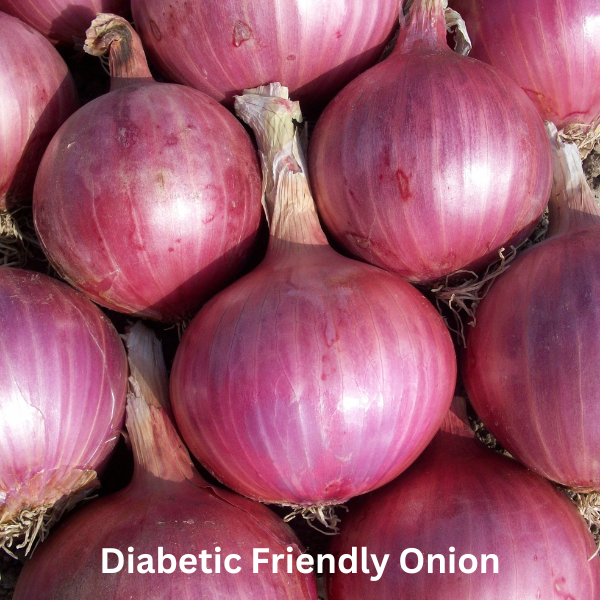
The tasty and adaptable onion is a staple in many different cuisines around the world. Onions feature a high fiber content, low carbohydrate content, and helpful chemicals that may help control blood sugar levels, making them a great supplement to a diabetic’s diet. Onions can help treat diabetes in the following ways:
6.1. Low in Carbohydrates:
Because onions contain comparatively few carbs, their effect on blood sugar levels is negligible. Roughly 9 grams of carbs (including some fiber that slows down the absorption of sugars) can be found in a 100-gram serving of raw onions. Because of this, onions are considered a diabetes-friendly item that can be used in cooking without having a substantial impact on blood glucose levels.
6.2. Rich in Dietary Fiber:
Onions are a good source of dietary fiber, which is necessary for healthy blood sugar levels. About 1.7 grams of fiber are included in a 100-gram serving of onions. Ingesting and absorbing carbs are slowed down by fiber, which causes blood sugar levels to rise more gradually after meals. For those with diabetes who need to manage their post-meal glucose increases, this can be quite helpful.
6.3. Contains Quercetin and Other Antioxidants:
Quercetin, an antioxidant that has been found to have anti-inflammatory and anti-diabetic effects, is abundant in onions. Quercetin may reduce fasting blood sugar levels and increase insulin sensitivity. Onions also contain other antioxidants, such as sulfur compounds and flavonoids, which help prevent oxidative stress, a condition associated with issues with diabetes and insulin resistance.
6.4. Supports Heart Health:
People with diabetes are particularly concerned about their heart health, and onions can help lower their chance of developing cardiovascular disease. Onions’ sulfur-containing components help lower cholesterol, blood pressure, and the risk of blood clots. The overall risk of problems connected to diabetes must be managed, and these heart-healthy effects play a significant role.
6.5. Low Glycemic Index:
Because onions have a low glycemic index (GI) of approximately 10, eating them only slightly raises blood sugar levels. Because of this, onions are a great addition to meals for people who want to maintain stable blood sugar levels. Adding low-GI items to your diet, such as onions, can help you better regulate your blood sugar levels.
Because of the above advantages, Onion is one of the best foods to manage blood sugar levels for the diabetes and non diabetes as well.
6.6. May Help Improve Insulin Sensitivity:
Certain chemicals found in onions, especially those that include sulfur and quercetin, have been linked in certain studies to improved insulin sensitivity. Better insulin sensitivity refers to the body’s cells’ increased capacity to react to insulin, which increases the body’s ability to absorb glucose from the bloodstream and lowers blood sugar levels.
Nutrient Values (Per 100 Grams of Raw Onions):
- Calories: 40 kcal
- Carbohydrates: 9 grams
- Fiber: 1.7 grams
- Sugars: 4.2 grams (natural sugars)
- Protein: 1.1 grams
- Fat: 0.1 grams
- Vitamin C: 7.4 milligrams (12% of Daily Value)
- Vitamin B6: 0.1 milligrams (5% of Daily Value)
- Folate: 19 micrograms (5% of Daily Value)
- Potassium: 146 milligrams (4% of Daily Value)
- Quercetin: Varies depending on variety and cooking method, but generally high
How to Incorporate Onions into a Diabetes-Friendly Diet:
- In Salads: Add raw onions to salads for a crunchy, flavorful addition that provides fiber and antioxidants.
- In Cooking: Use onions as a base for soups, stews, and sauces to add depth of flavor and nutrition.
- As a Side Dish: Caramelize onions and serve them as a side dish or topping for lean proteins like chicken or fish.
- In Sandwiches and Wraps: Include thin slices of onions in sandwiches or wraps for extra flavor and a nutritional boost.
Varieties of Onions:
- Yellow Onions: Mildly sweet and great for cooking.
- Red Onions: Slightly milder and often used raw in salads.
- White Onions: Crisp and sharp, ideal for salsas and garnishes.
- Green Onions (Scallions): Mild flavor, often used in Asian cuisine and as a garnish.
In summary, onions are a food that is good for people with diabetes and has a lot of health advantages, such as better blood sugar regulation, heart health, and antioxidant protection. They are an important food because of their high fiber content, low carbohydrate level, and abundance of healthy chemicals like quercetin.
7. Steel-Cut Oats: A Nutritious and Diabetes-Friendly Whole Grain
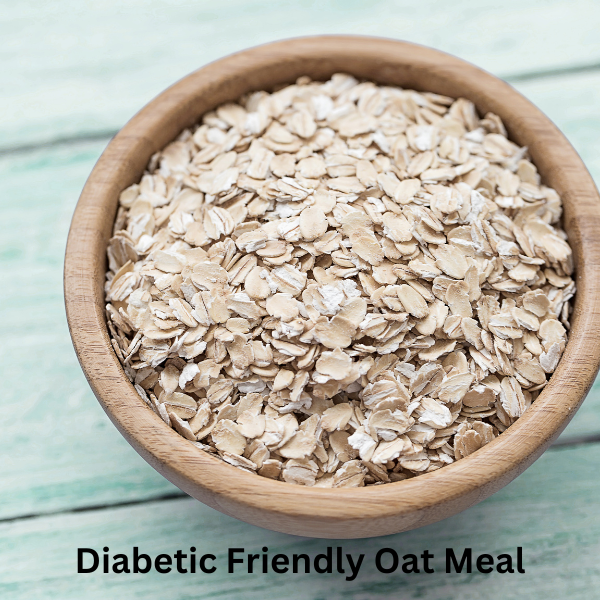
A healthy whole grain, steel-cut oats can be especially helpful to those who have diabetes. Steel-cut oats are less processed than quick or rolled oats, which helps preserve their natural fiber and vitamin value. This is why steel-cut oats are especially beneficial for diabetic management:
7.1. Low Glycemic Index:
Compared to foods with a high GI, steel-cut oats generate a moderate, gradual rise in blood sugar levels due to their low GI of approximately 42. People with diabetes can benefit most from this slow digestion because it helps to reduce post-meal increases and maintain stable blood glucose levels.
7.2. Rich in Soluble Fiber:
A great source of soluble fiber, especially beta-glucan, is steel-cut oats. Because soluble fiber reduces the rate at which carbohydrates enter the bloodstream, blood sugar levels rise more gradually. Cooked steel-cut oats have roughly 4 grams of fiber per cup, which helps with better glucose management. Furthermore, soluble fiber promotes heart health by lowering cholesterol, which is important for diabetics.
7.3. Supports Heart Health:
Steel-cut oats can help lower the risk of cardiovascular disease, which is increased by diabetes. It has been demonstrated that the beta-glucan in oats lowers LDL (“bad”) cholesterol levels, which is important for heart health. Frequent oat consumption can also help lower blood pressure, which lowers the risk of heart disease even further.
7.4. Provides Sustained Energy:
Slow-digesting complex carbs found in steel-cut oats give you steady energy throughout the day. People with diabetes should pay special attention to this because it helps prevent energy crashes and maintain steady blood sugar levels. A slower rate of glucose absorption by the circulation contributes to increased insulin sensitivity.
7.5. Rich in Essential Nutrients:
A number of vital elements, such as magnesium, phosphorus, and manganese, which are crucial for glucose metabolism and general health, can be found in good amounts in steel-cut oats. Specifically, the body uses magnesium for a variety of metabolic processes, including blood sugar regulation. One cup of cooked steel-cut oats supplies approximately 12% of the daily required magnesium intake.
7.6. Promotes Satiety and Weight Management:
Steel-cut oats’ high fiber content encourages satiety, which can help with weight management—a critical component of managing diabetes. Sustaining a healthy weight enhances blood sugar regulation overall and insulin sensitivity. Steel-cut oats’ gradual digestion makes you feel fuller for longer, which also helps you avoid overindulging.
Considering the above facts and advantages, Oat is the best foods to manage blood sugar levels for the diabetes.
Nutrient Values (Per 1 Cup of Cooked Steel-Cut Oats):
- Calories: 150 kcal
- Carbohydrates: 27 grams
- Fiber: 4 grams
- Sugars: 1 gram (natural sugars)
- Protein: 5 grams
- Fat: 2.5 grams
- Magnesium: 48 milligrams (12% of Daily Value)
- Phosphorus: 180 milligrams (18% of Daily Value)
- Manganese: 1.4 milligrams (70% of Daily Value)
- Iron: 2 milligrams (10% of Daily Value)
How to Incorporate Steel-Cut Oats into a Diabetes-Friendly Diet:
- As a Breakfast Option: Cook steel-cut oats and top them with nuts, seeds, and a small amount of fresh fruit for a filling, nutritious breakfast.
- In Baking: Use steel-cut oats in baking recipes like muffins or bread to increase fiber content.
- As a Savory Dish: Cook steel-cut oats with vegetables, herbs, and a lean protein source for a savory meal option.
In conclusion, steel-cut oats are a diabetes-friendly grain that offer a host of health advantages, such as better blood sugar regulation, strengthened heart health, and prolonged vitality. They’re a great option for anyone trying to effectively manage their diabetes because of their low glycemic index and high fiber content.
Lead Your Life Diabetes Free


